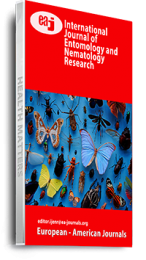Nigeria reported highest incidence of dracunculiasis in the world in 1991 (WHO 1991). Ebonyi, a small state in the south-eastern part of the country was rated the most endemic with a total of 3,370 cases reported in 1996 alone (Global 2000 & Ojodu 2001). In 2005, the World Health Organisation proclaimed that the disease was eradicated from Ebonyi state and indeed, Nigeria, and the country was declared guinea worm free. This study examined the bionomics of Cyclops in sampled fresh waters in the state and their guinea worm infection status fifteen years after it was declared Guinea worm free by the World Health Organisation.. The study was done in three phases. Phase one was between 2004 and 2005 (before the proclamation), phase two was between 2005 and 2006 (shortly after the proclamation), and phase three was in May/June 2020 (fifteen years after the proclamation). Out of 5,529 Cyclops examined during the first phase using microscope, 36 were found infected with dracunculus larvae. Prevalence by seasonal variation showed that more Cyclops occur during the months of dry season (November to April) with peak transmission occurring between February and April. Out of 1,443 Cyclops studied in the second phase, none was found infected with Dracunculus larvae, indicating that guinea worm was actually eradicated in the state. Repeated study in the third phase in 2015 authenticated that finding as none of the Cyclops was found infected with guinea worm larvae. This implies that there is no more prevalence of infective guinea worm larvae in the communal water sources in the area. But the abundance of Cyclops were more in the communal water sources in the third phase due to suspension of regular treatment of ponds with abate which controls Cyclops population in water bodies. The increase of Cyclops population in the water bodies calls for serious attention by responsible authorities and collaborating agencies with the view to ensuring more effective surveillance system as any introduction of one case of dracunculus larvae into the water bodies will result in explosive outbreak of the disease in a larger scale in the area.
Keywords: Ebonyi State-Nigeria, bionomics of cyclops, communal waters, communication, guinea worm infection

